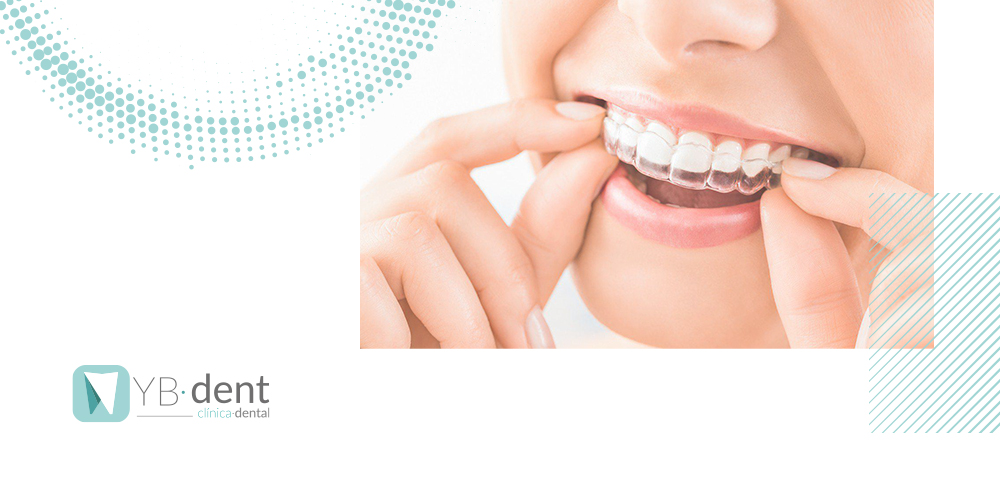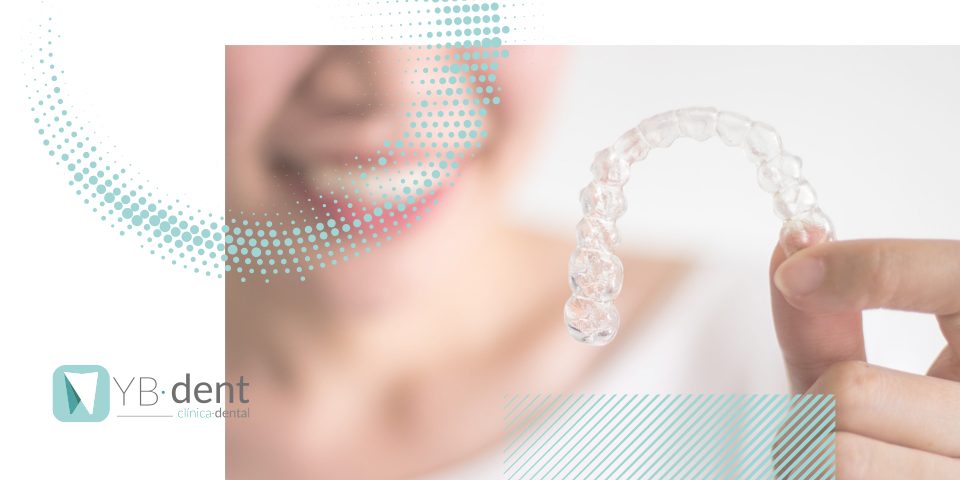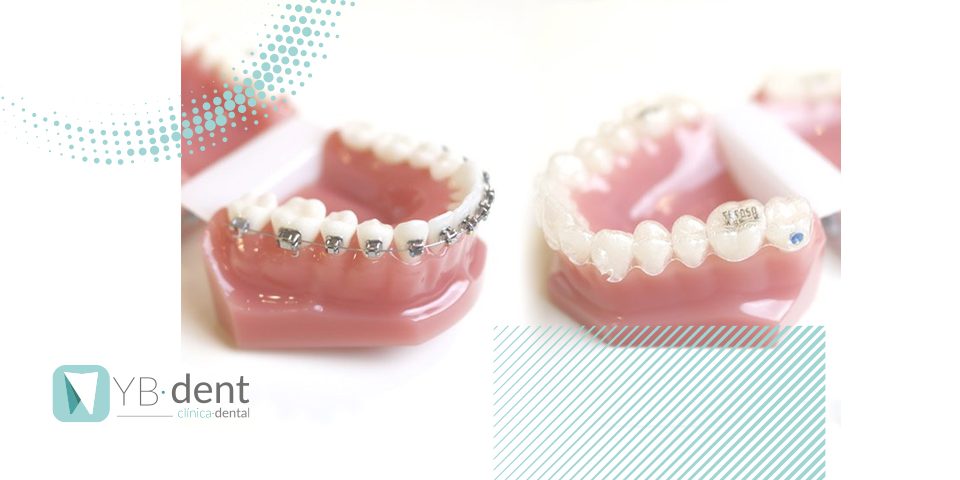¿Qué es la ortodoncia invisible?

Hay personas que tienen problemas en su dentadura y necesitan aparatos de fijación. No obstante por pensamientos como «no me quedará bien», «no me gusta como se ven» o «eso me han dicho que es muy molesto» no acuden a un experto y solucionan su problema. Ahora en Clínica Dental YB-dent te damos la solución y te ofrecemos ortodoncia invisible para que esto deje de ser un obstáculo que te impida lucir una sonrisa perfecta.
Por si no sabes que es la ortodoncia invisible hoy te lo contamos. Este tratamiento es el uso de aparatos ortopédicos invisibles para corregir la posición de huesos y dientes. En este método, los aparatos de fijación como brackets se colocan en el interior de los dientes, mientras que en la técnica convencional, se colocan en el exterior de los dientes. Mediante este proceso se puede obtener el mismo resultado, pero el costo es más elevado y el tiempo es mayor.
Con la ortodoncia invisible se pueden solucionar problemas de diastemas, de sobre mordida o de apiñamiento sin la necesidad de llevar los antiestéticos brackets metálicos. Además son más cómodos y puedes hacer un movimiento mucho más suave. La ortodoncia invisible es removible, por lo que puedes quitártelos a la hora de comer para que no se dañen y volvértelos a poner después. Los puedes retirar con facilidad también cuando te cepilles los dientes. De esta forma podrás lavarte mucho mejor los dientes y así tener una mejor higiene bucodental.
¿Qué tipo de ortodoncia invisible elegir?
Para saber bien qué tipo de ortodoncia invisible elegir debes saber los dos tipos que existen, son:
Ortodoncia lingual
Parecido a la ortodoncia tradicional, sin embargo los brackets son más pequeños, se sitúan dentro de los dientes y es invisible por lo que en por fuera es muy difícil que se note. Además, utilizan programas informáticos en 3D para personalizar los diseños en función de la estructura dental de cada persona.
Sin embargo, esta técnica no es removible pero sí evita los daños que causa el bracket tradicional como por ejemplo las manchas y la descalcificación.
Invisalign
Este método innovador incluye una férula transparente hecha a medida en la que se colocan accesorios en el interior para controlar el desplazamiento de los dientes a la posición que deseas. En este procedimiento no se utiliza ni brackets ni alambres evitando así las úlceras y las molestias comunes cuando utilizas las ortodoncias tradicionales.
La férula está hecha de plástico y se reemplaza aproximadamente cada dos semanas según las instrucciones de los expertos. Además de ser invisible es completamente móvil, por lo que es mucho más cómodo y el paciente puede quitarse la prótesis cuando lo necesite.
Por otro lado, las nuevas tecnologías han desarrollado una nueva técnica que consiste en férulas transparentes removibles ubicadas en la parte exterior del diente y prácticamente imperceptible. Están hechos de material plástico resistente a la corrosión (policarbonato) y el tiempo de tratamiento suele ser similar al de las técnicas convencionales.
Tratamiento de la ortodoncia invisible
El tiempo del tratamiento de la ortodoncia invisible varía según cada persona y sus peculiaridades. Como estimación aproximada suelen durar de 9 a 19 meses, siempre que se cumplan las indicaciones de los expertos. Por esto para que el tratamiento cumpla el tiempo estimado, sea plenamente eficaz y cumpla con el final esperado es importante llevar el alineador como mínimo 20 horas al día.
Por si aún no te hemos convencido echa un vistazo a internet y observa el antes y después de las ortodoncias invisibles ¡es una maravilla el resultado!
Ya sabes, acude a nuestra clínica Dental YB-dent y empieza a lucir de unos dientes sanos y bonitos.



